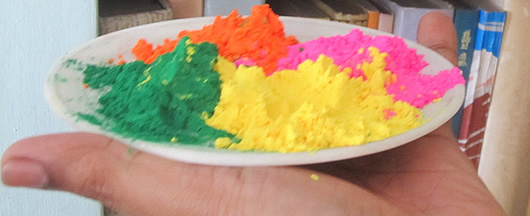
The Festival of Colors that Ushers a Harmonious Bond between Family and Friends
Holi is India’s festival of colors that is celebrated with great pomp during mid February to early March each year to mark the victory of “good” over “evil”. From Pre-Christian era, this festivity has been celebrated throughout India. There are mythological legends associated with it, where people show their abeyance to Hindu gods and goddesses. If you travel to India during February and March, make sure you visit Santiniketan – birthplace of Tagore, Vrindavan – a pilgrim spot where Lord Krishna is piously worshipped, or Puri – yet another pilgrim spot for Lord Jagganath devotees.
Holi changes the entire ambience. Girls decked up in beautiful attire and ornaments made of flowers dance and sing. Everyone participate in this festivity by smearing colors on one another as a mark of friendship. The youngsters seek blessings from the elders in the family while many visit temples to offer prayers of goodwill and happiness. In short, it is a show of happiness and warmth. As winters bid adieu for the year, the day warms up slowly throughout the country.
“Holi” or burning – the legend of Holika
The age old festival, Holi is somewhat associated with Indian mythology. As the legend goes, King Hiranyakashyapu was a heartless demon king who was conceited enough to forbid people from worshipping Hindu lord, Vishnu. His sister, Holika was blessed with a mystical power – a power to resist fire burns. Prahalad, the son of the king defied his father’s dictum and still worshipped Vishnu. The king ordered Holika to sit on the fire with Prahalad on her lap to punish the lad. But the turn of events was such that Holika was singe in the fire while Prahalad was left untouched.
To mark the victory of this feat – good over the evil — people still today light a bonfire on the eve of Holi to burn the evil forces in this world and show abeyance to Lord Vishnu. The next day, Holi is celebrated with colors, sweets, and merrymaking.
Holi – A Mark of Respect to Courtship and Love
Holi is also celebrated in many areas of Uttar Pradesh in north India, such as Vrindavan and Mathura – the birthplace of Lord Krishna. As the legend goes, Lord Krishna lived in Dwarka city along with his friends in the village. Just like any teen youngster, Krishna used to play truant with the village girls, drench them with colors, and play tricks on them. However, the girls would enjoy the fun, merrymaking, and laughter initiated by Krishna. They would eventually forgive his mischievous pranks. In the following years, Krishna grew up to be a handsome king. His love for Radha, courtship with her, and affection towards the people in the village are also marked through the festival of colors – Holi.
Today, this festival of masses is celebrated to usher love and affection to one and all. It is a traditional culture where we play with colors, pray to Lord Krishna and his beloved, Radha. The bond between Krishna and Radha is a sacred one and devotees show respect to the courtship between the two through Holi.
Holi Colors – Various Types of Attractive Hues
Holi is celebrated by smearing dry colors or “gulal” on forehead and face. All kinds of hues can be seen in the market – from red, pink, magenta, to green, blue, and purple. Although you may find the dry colors made up of minute mica chips, there are some herbal varieties as well. Ages back, the colors used to be made from the flowers of “Tesu” or Palash tree that bloom especially during this time. Some colors are mixed with water and then played. People drench in these colors and smear dry colors on one another.
